Why Do I Hit Iron Shots Fat?
Scratching your head and wondering "why do I hit iron shots fat?" is going to get you nowhere. Check out these tips from a Golf Monthly Top 50 Coach instead...
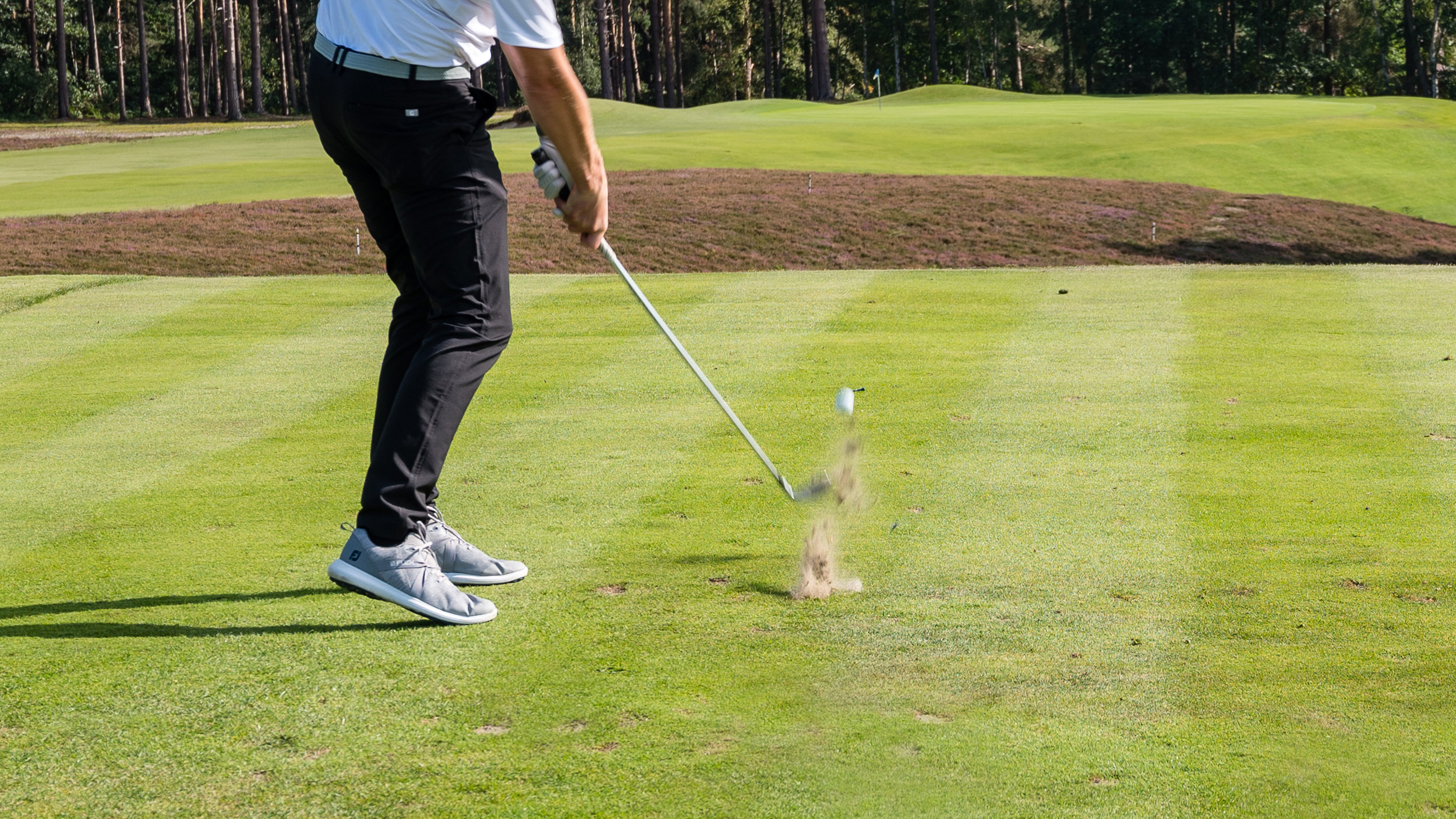
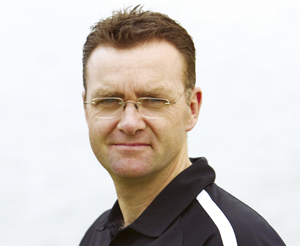
Hitting iron shots fat is a surefire way to make big scores and cause your handicap to increase, but there are some simple remedies to this destructive issue. The common fault plagues golfers of all abilities, and can seriously affect your confidence on the course if ignored.
In this video and article, Golf Monthly Top 50 Coach John Jacobs shares some solutions and offers his expert tips on how to stop striking your irons heavy.
The first thing to consider is how the club travels from the top of the backswing to the finish position. Imagine an oval-shaped path, and identify the lowest point of that arc, as that crucial zone is the key to understanding where hitting fat golf shots comes from.
Ideally, your divot should start around two inches after you have made contact with the golf ball and never before. Trying to get the ball in the air sometimes causes golfers to lean back, moving the low point in the swing and resulting in a heavy contact.
This drill will help with that. Place an alignment stick next to your left hip, as demonstrated in the picture below. Let your lead hip bump into the stick as you start the downswing, as this will prevent you from leaning back and instead create a motion that less likely to lead to fat strikes.
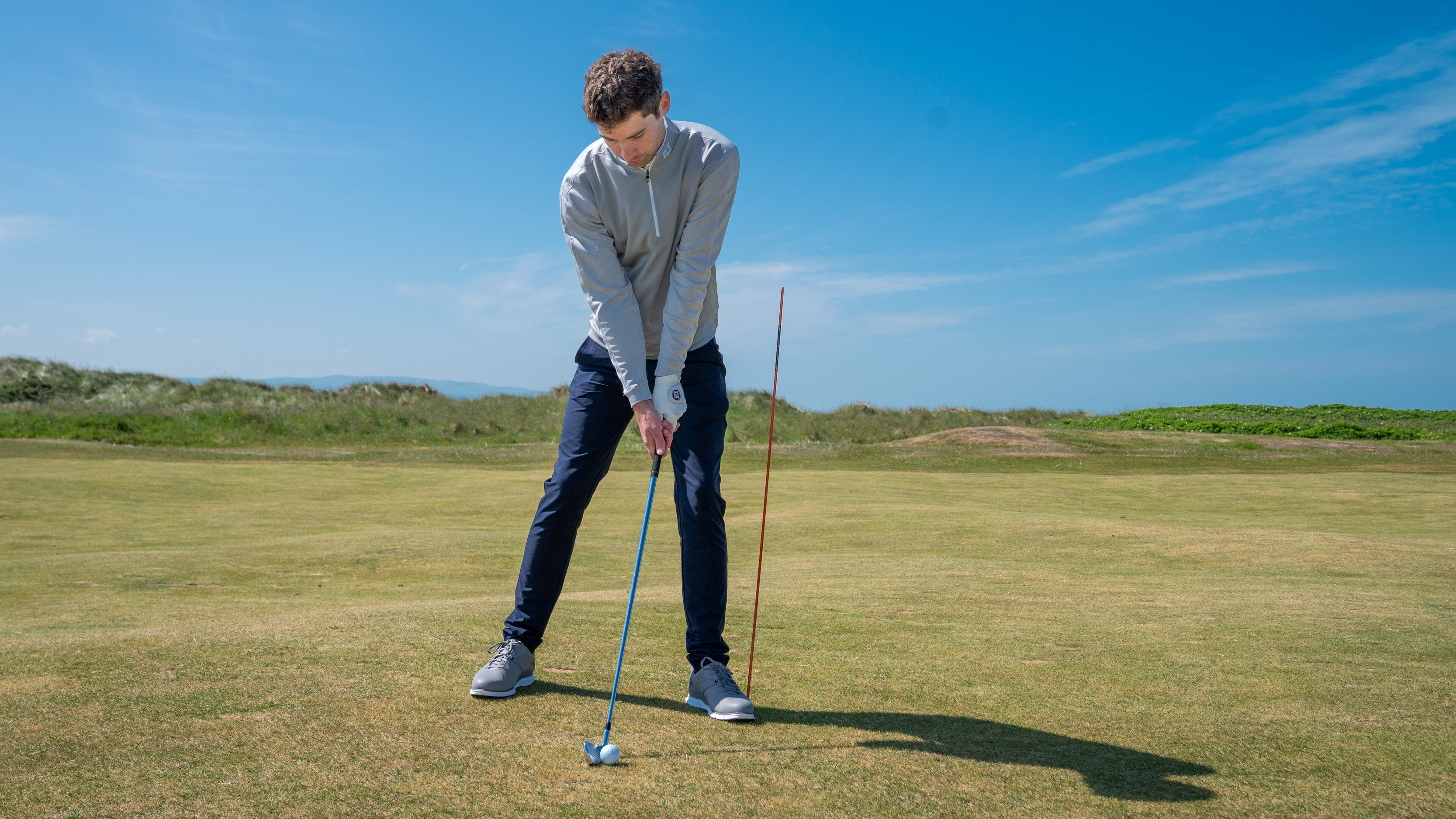
Try and make contact with the stick as you start your downswing
The next element to consider is your angle of attack. Hitting the ball fat is often a consequence of swinging too steeply. To prevent this, feel like you take the club back with your arms while rotating your shoulders around your spine.
This motion should feel more around your body, as opposed to a steep up and down movement. To practise this flatter action, try to hit from a side hill lie where the ball is above your feet. This will encourage the desired swing plane.
Get the Golf Monthly Newsletter
Subscribe to the Golf Monthly newsletter to stay up to date with all the latest tour news, equipment news, reviews, head-to-heads and buyer’s guides from our team of experienced experts.
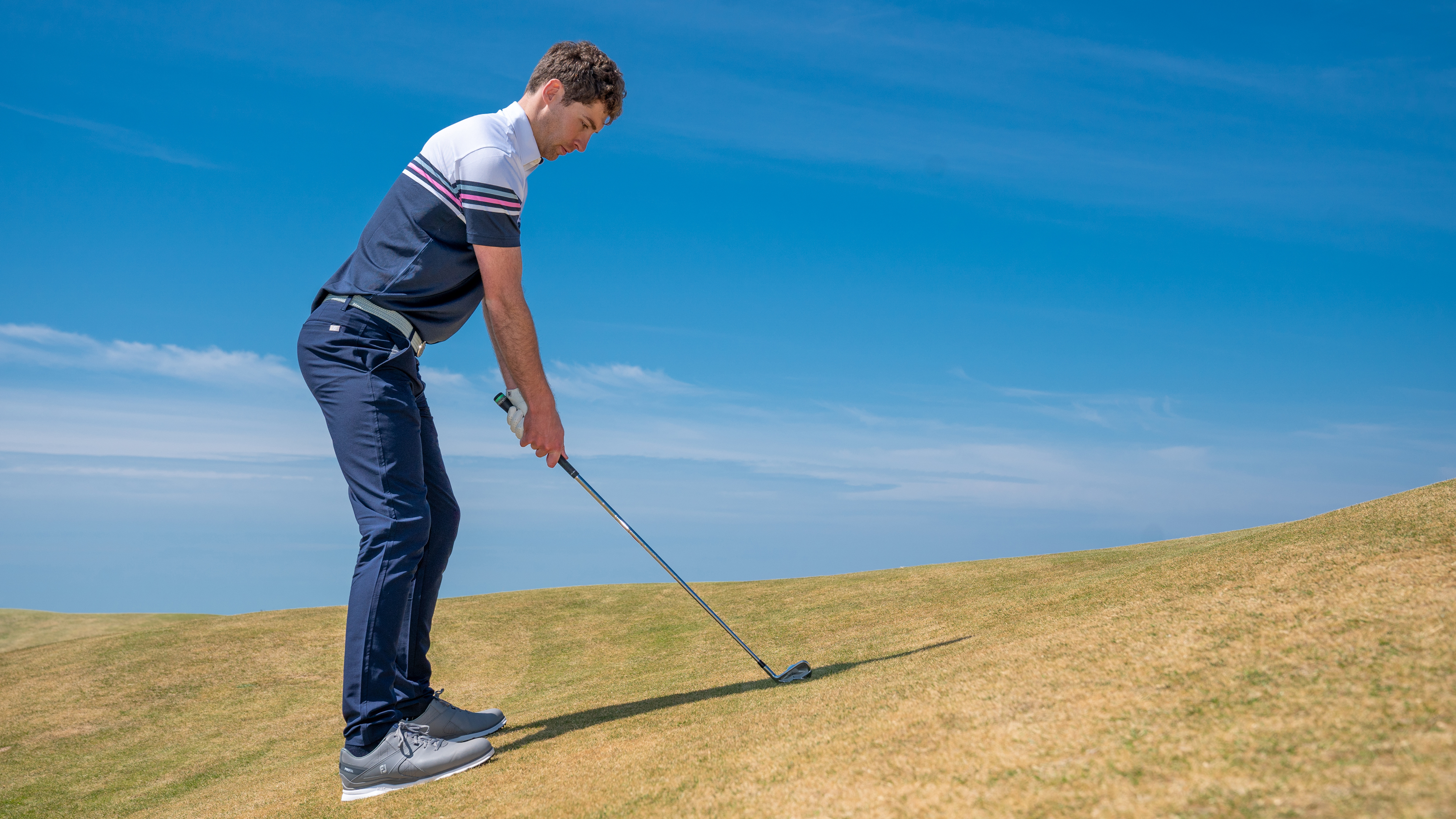
Hitting shots with the ball above your feet will shallow out your angle of attack
Finally, consider how weight distribution in the golf swing affects the consistency of your ball-striking. As you draw the club back, your weight should shift to your back foot, before it ends on your front foot as you swing through to a nice, balanced finish.
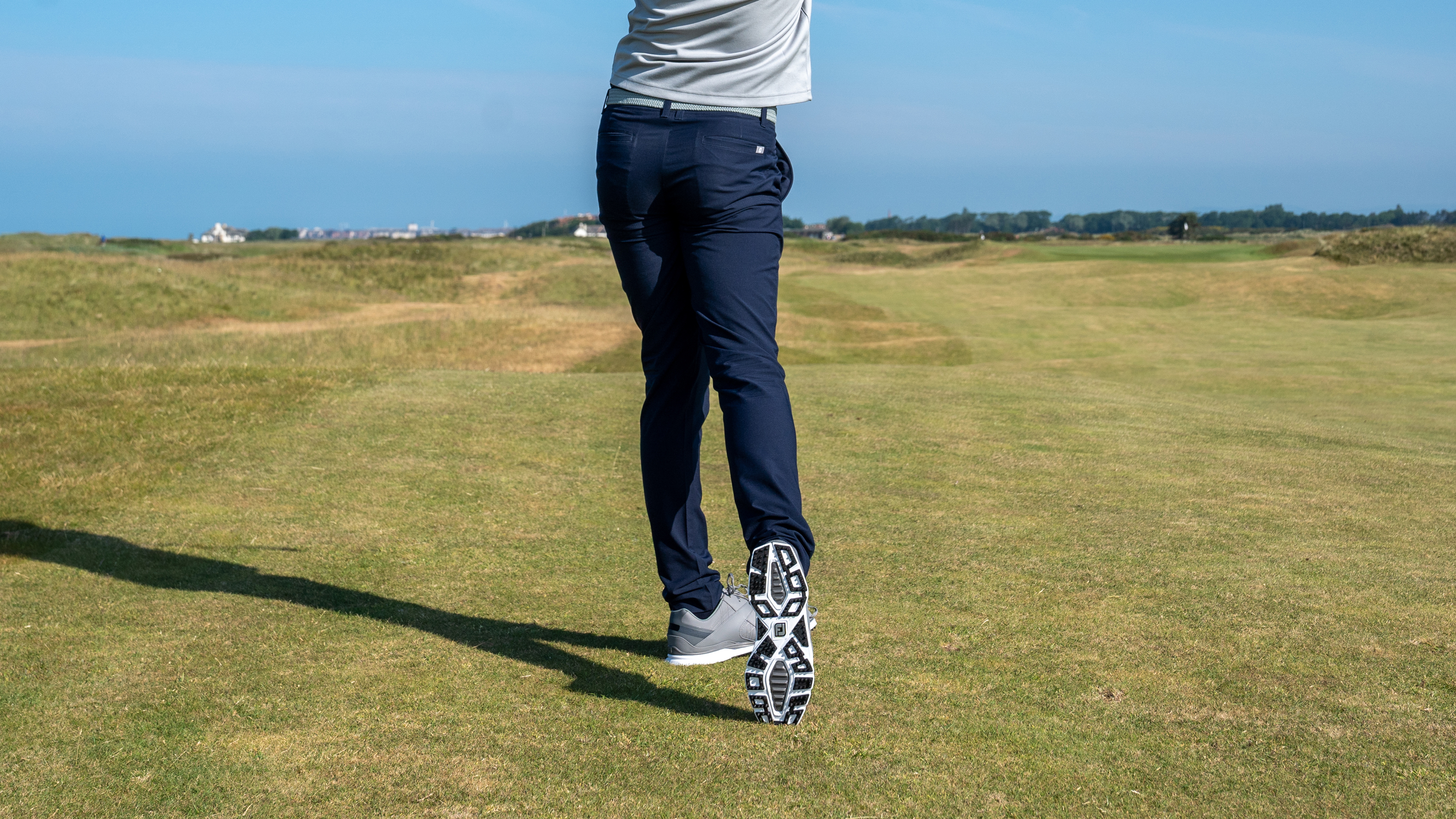
Shifting your weight through the shot should result in your trail heel coming off the ground
A really handy checkpoint here is the heel of your back foot. In the finish position, it should be up, showing that you have moved your weight through the shot more effectively.

Location: Cumberwell Park
John has been Head Professional at Cumberwell Park in Wiltshire since it opened in 1994. He gets as much pleasure teaching beginners as he does county players, although being Wiltshire's Head Coach, Boys Coach and Girls Coach means he's always in demand. He also works with England Golf, and was England Coach Of The Year in 2020.
He's had the pleasure of working with many top players over the years, and has fond memories coaching the likes of Tommy Fleetwood, Matthew Fitzpatrick and Tom Lewis before they made the leap into professional golf. John specialises in swing analysis and short game development.
-
 Justin Thomas Confirms Stand-In Caddie Will Not Replace Long-Term Looper After First Victory Since 2022
Justin Thomas Confirms Stand-In Caddie Will Not Replace Long-Term Looper After First Victory Since 2022Thomas won the RBC Heritage with Max Homa's former looper, Joe Greiner as his assistant but is looking forward to welcoming his regular caddie back soon
By Jonny Leighfield
-
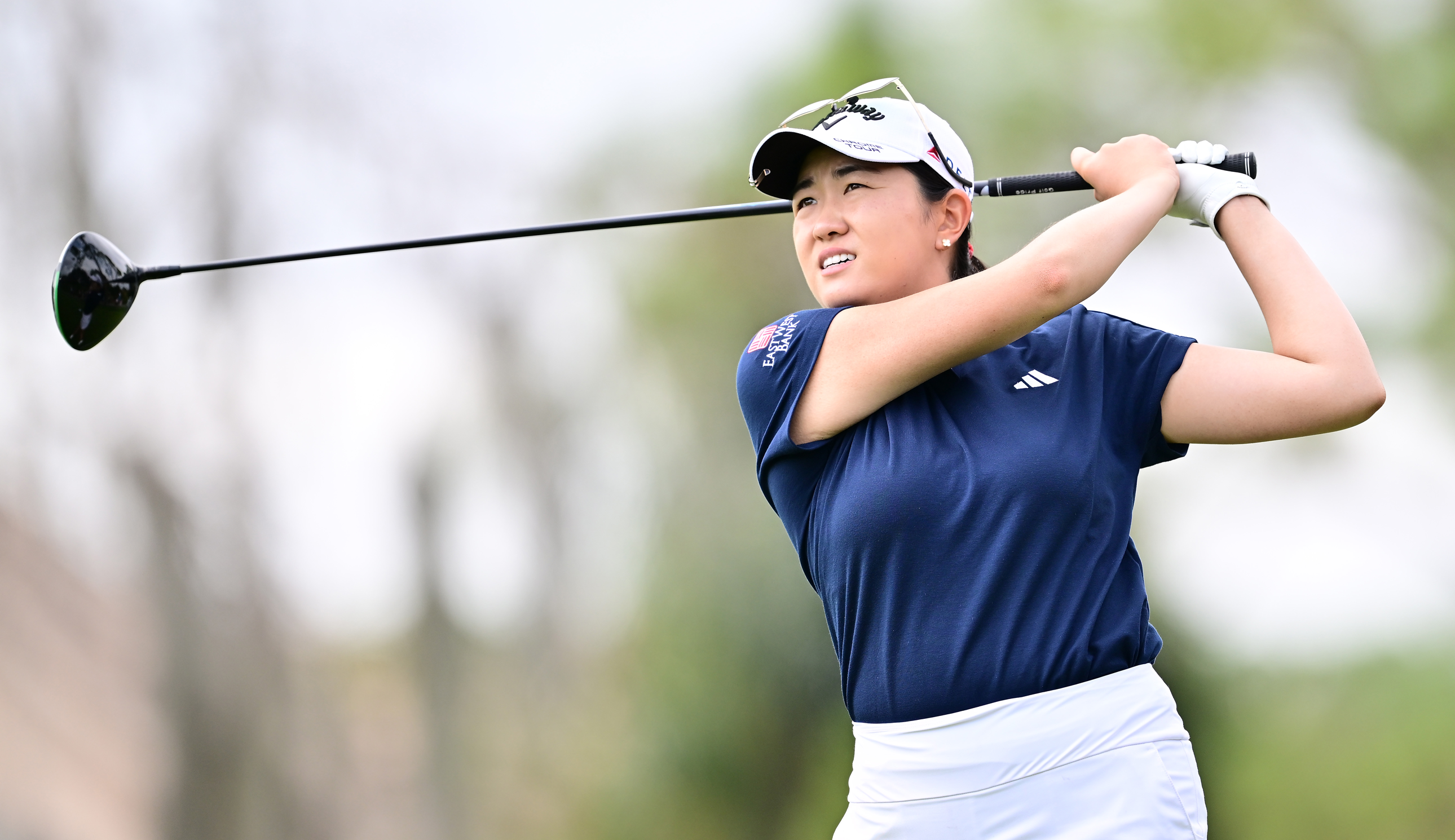 Rose Zhang Ruled Out Of Chevron Championship
Rose Zhang Ruled Out Of Chevron ChampionshipThe American hasn't featured in a competitive event since withdrawing from the T-Mobile Match Play, with it reported that Zhang will miss the Chevron Championship due to an ongoing neck injury
By Matt Cradock